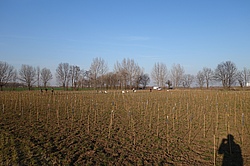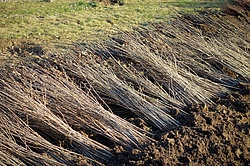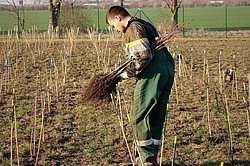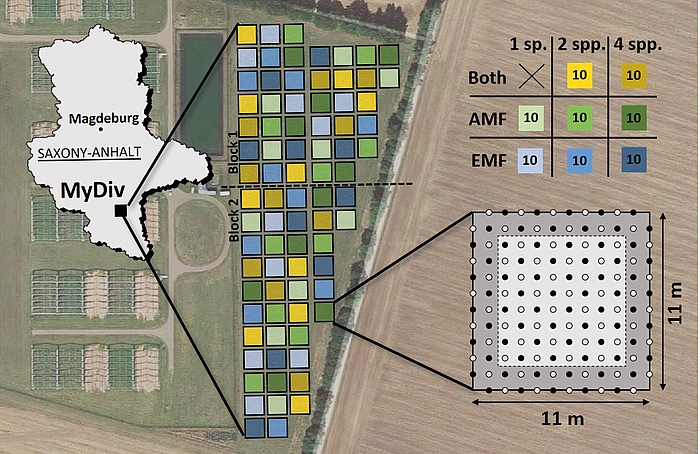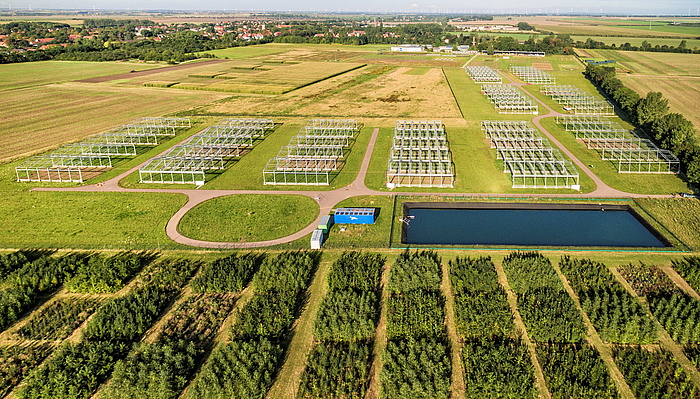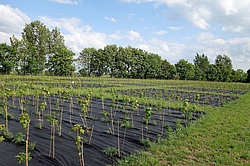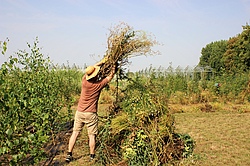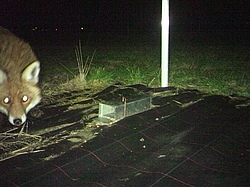The Site
Experimental Design
We established a gradient in tree species richness comprising monocultures, two- and four-species mixtures. In addition, we set up a mycorrhizal type treatment with three levels comprising only trees with arbuscular mycorrhizal fungi (AMF), only trees with ectomycorrhizal fungi (EMF), and AMF- and EMF-trees in mixture (Ferlian et al., 2018).
For species selection, a pool of all potentially relevant tree species was assembled using the following criteria: (1) deciduous angiosperm that is native to Germany; (2) adapted to site conditions; (3) species are widely spread across the angiosperm phylogeny; and (4) economical or recreational relevance in Germany. The tree species that met these criteria were separated into two groups, AMF and EMF. We selected five species from each pool that contributed to minimising trait differences other than mycorrhizal type between AMF and EMF species pools which may confound effects of mycorrhizal type on ecosystem functions.
We planted replicated monocultures of each species (10 x 2 plots), a comprehensive set of possible two-species combinations (30 plots), and five replicates of different species compositions in the four-species mixtures (30 plots). In total, 80 plots were established in two blocks. Within each block, spatial arrangement of plots is random. The plots have a size of 121 m2 (11 x 11 m) with a 1.5 m buffer consisting of the outermost tree rows and a core area of 8 x 8 m. Samples and measurements are exclusively taken in the core area to reduce edge effects. Trees were planted in a distance of 1 m in a regular pattern. 140 tree individuals per plot were planted, which adds up to 11,200 trees in total.
Between- and within plot spatial design (modified after Ferlian et al., 2018; aerial photograph: ©2017 Google,
Map data ©2017 GeoBasis-DE/BKG (©2009))
References
Altermann M, Rinklebe J, Merbach I, Körschens M, Langer U, Hofmann B. 2005. Chernozem - Soil of the Year 2005. Journal of Plant Nutrition and Soil Science 168: 725-740.
Ferlian O, Cesarz S, Craven D, Hines J, Barry KE, Bruelheide H, Buscot F, Haider S, Heklau H, Herrmann S, Kühn P, Pruschitzki U, Schädler M, Wagg C, Weigelt A, Wubet T, Eisenhauer N. 2018. Mycorrhiza in tree diversity–ecosystem function relationships: conceptual framework and experimental implementation. Ecosphere 9:e02226.
